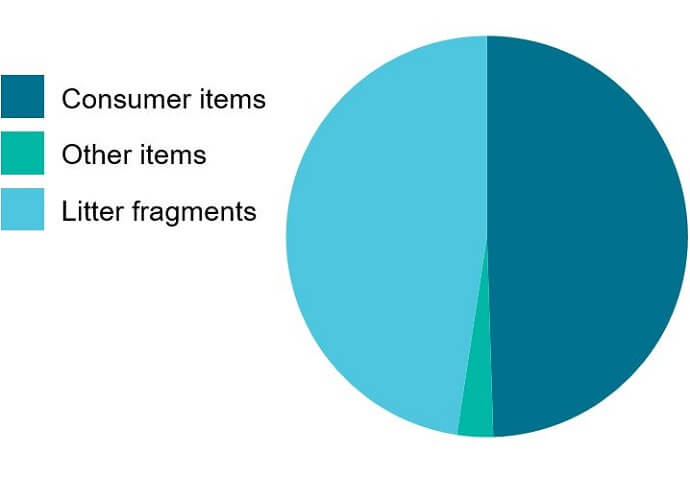The Key Littered Items Study (KLIS) started in 2017 and surveys are currently conducted quarterly. The KLIS monitoring sites are in mangroves in urban estuaries and on select remote beaches which span the full length of the NSW coast.
The study has been run in partnership with Southern Cross University, NSW Environment Protection Authority, Tangaroa Blue, Hunter Local Land Services, Taree Indigenous Development and Employment (TIDE) Rangers, the Eurobodalla Shire Council and others. The monitoring program informs existing and emerging issues, such as the impacts of COVID-19 on marine debris.
Key findings
The specific components of what we are seeing in coastal waterways change, but since 2017, there have been some consistent trends and findings from our marine debris research. Comparing our KLIS data with National Litter Index (NLI) data showed that for every piece of litter found on land, over 9 times more is found washed up in urban estuaries. In the Sydney metropolitan region, this can rise to almost 39 times the litter found on land.
KLIS data has revealed the types and quantities of this marine debris:
- The 4 most common litter types found in urban estuaries are confectionary and snack packaging, plastic lids and bottle tops, straws and cigarette butts. These 4 items can make up almost 50% of the consumer items found.
- In 2019, consumer items accounted for half of all the items in the KLIS. These are things like takeaway containers, plastic bags and straws. Most of the other half of debris objects found is generally litter that has broken down into smaller bits of plastic, glass and other materials.

Proportion of each type of litter item in the Key Littered Items Study
- While the container deposit scheme (CDS) data is limited, the data that is available suggests a reduction in containers in the environment since the scheme was implemented. There is usually a spike of containers found in waterways during the summer months, reflecting the number that are consumed over that time, but overall, the number of containers being found is reduced.

Return and Earn containers in Key Littered Items Study coastal waterway sites
- When people stay at home, does their litter stay with them? The KLIS in 2020–2021 is investigating the change in the types and amounts of litter items during the COVID19 pandemic in New South Wales. In December 2020, on the shoreline of a Sydney estuary site, we found an average of 1 disposable mask every 10 metres.
- Over the 2 years since the introduction of the voluntary plastic bag ban at major supermarkets in July 2018, the KLIS data suggests that there had been 78% fewer single use grey plastic shopping bags in our urban estuaries (as compared with National litter Index data). Plastic bags are highly mobile and are 15 times more likely to be found washed up at our urban estuary monitoring sites than on land.
- Many plastic beverage containers found on remote NSW beaches have likely come from passing ships or ocean currents. The KLIS uses a library of 128 international bottles maintained by Southern Cross University to help determine the origin of plastic beverage containers that end up on our remote beaches.
- A pilot study of microplastics at a Sydney estuary site, as part of the Australian Microplastic Project (AUSMAP), has shown moderate to very high microplastic loads over time – with up to 1287 pieces of microplastic per square metre of the shoreline area in December 2020. More research is being undertaken to fully understand how these microplastics are entering and impacting our waterways to help develop effective management solutions.